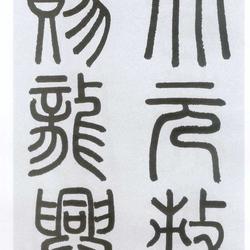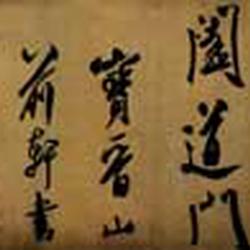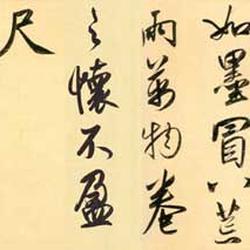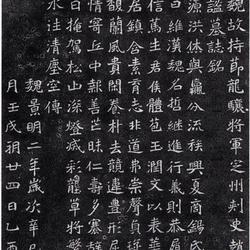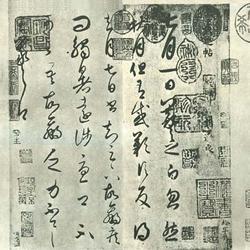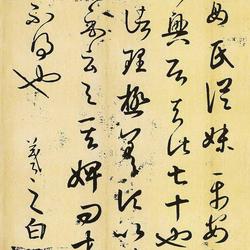Cai Xiang's "Wan'an Bridge", regular script. Luoyang Bridge, formerly known as Wan'an Bridge, is located on the Luoyang River in Luoyang Town, Licheng District, Quanzhou City, Fujian Province. Because the estuary of Luoyang River was called Wan'an Ferry in the past, the locals also called Luoyang Bridge Wan'an Bridge. Luoyang Bridge was built on the initiative of Cai Xiang, the prefect of Quanzhou in the Northern Song Dynasty. Construction started in the fifth year of Huangyou's reign (1053) in the Northern Song Dynasty and took 6 years and 8 months to complete. The bridge was built at the intersection of the river and the sea. The water was wide and the waves were strong, so the project was very arduous. The working people at that time pioneered the "raft foundation" to build bridge piers and invented the "oyster foundation". To solidify the bridge foundation. It makes people travel "by boat, only to be safe from danger". Luoyang Bridge is magnificent in scale, with an original length of 1,200 meters and a width of about 5 meters. It has 46 piers, 500 bridge columns, 28 stone lions, 7 stone pavilions and 5 stone towers. The existing bridge is 834 meters long and 7 meters wide. There are 31 remaining boat-shaped bridge piers. There are many cultural relics attached to Luoyang Bridge, the most eye-catching of which is the stele "Wan'an Bridge" written by Cai Xiang himself in the "Zhonghui Cai Gong Temple" in the south of the bridge. This stele not only has dignified and calm calligraphy, but also has concise words. , the workmanship is meticulous, and it is known as the "three wonders" of writing, calligraphy and engraving.
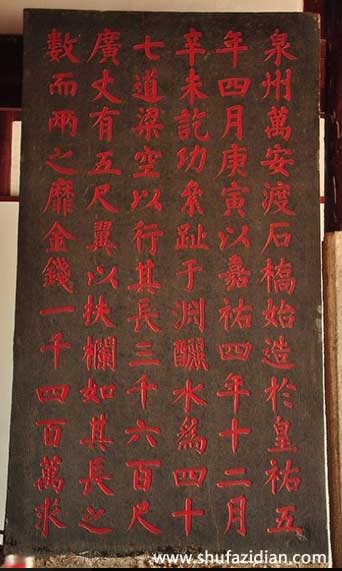
This stone is the original stone of Cai Xiang's calligraphy. The writing is strong and strong. From this, we can trace back to the beginning of calligraphy, and we can get the essence of Yan Lugong's regular script.
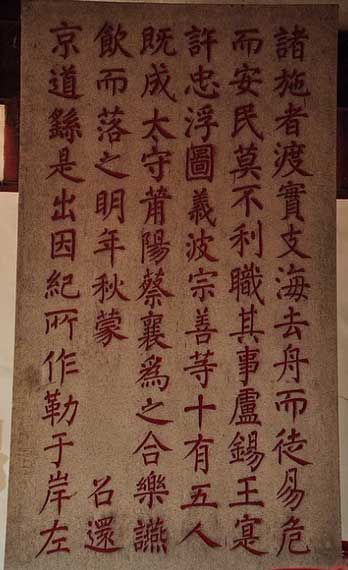
This is the second stone. The original stele was destroyed and was re-engraved later. Upon closer inspection, the writing power of this stone is slightly weaker, and its appearance is less impressive.
The following are rubbings
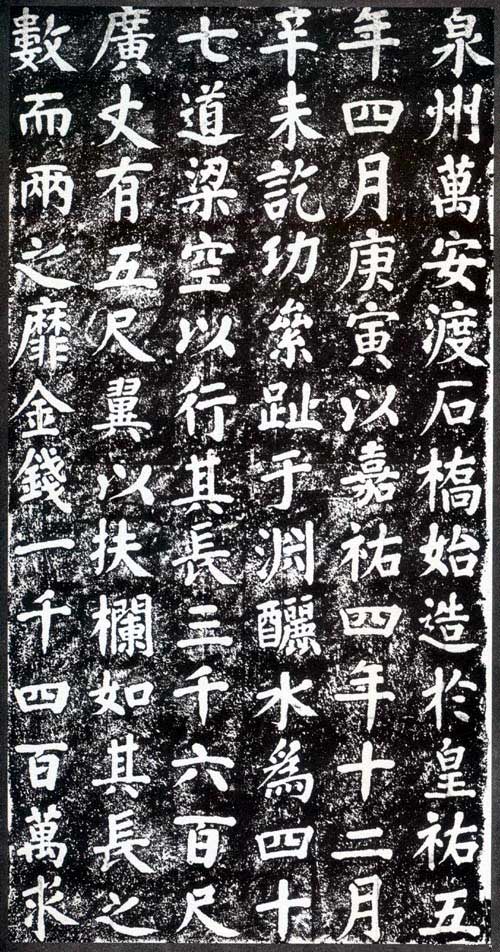
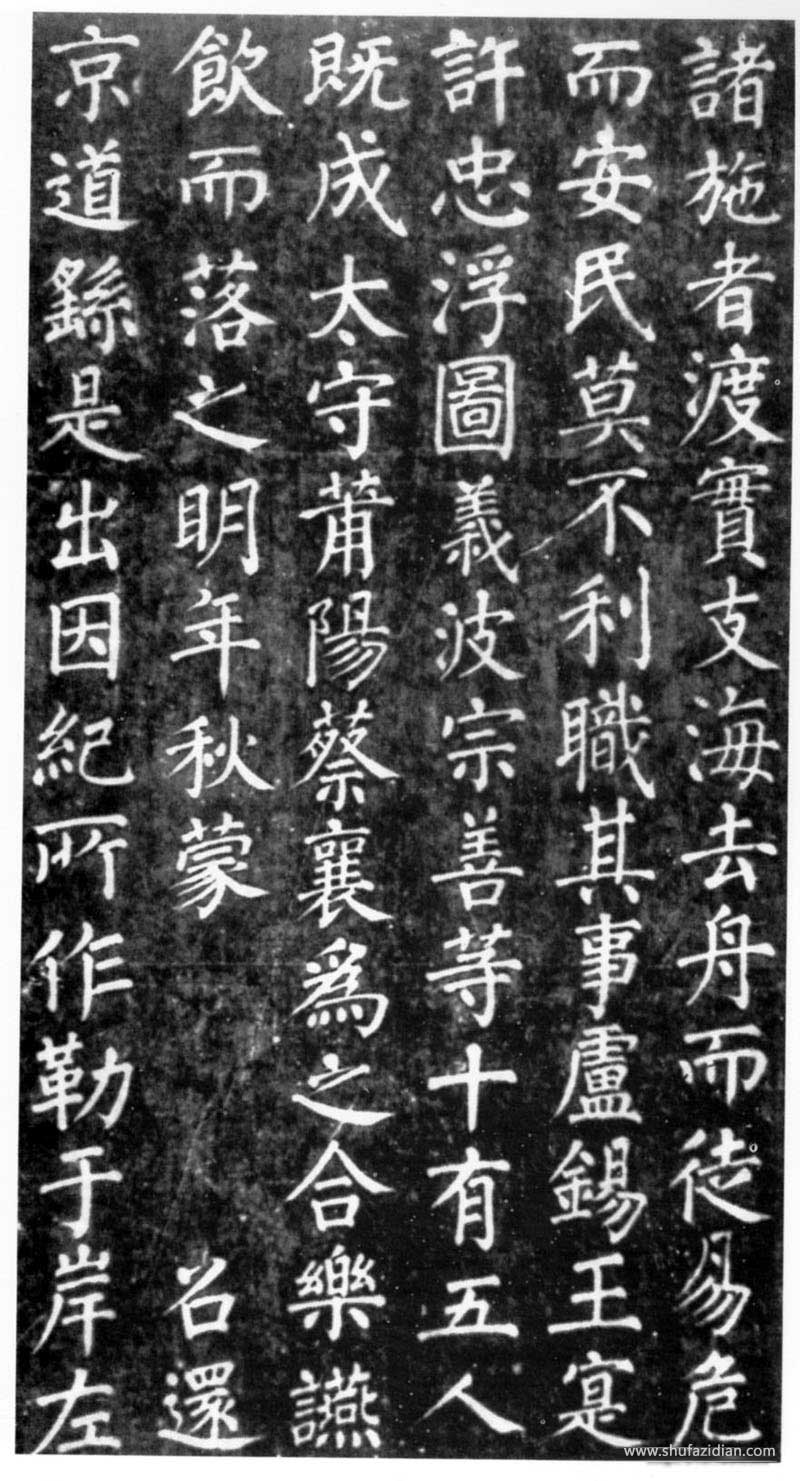
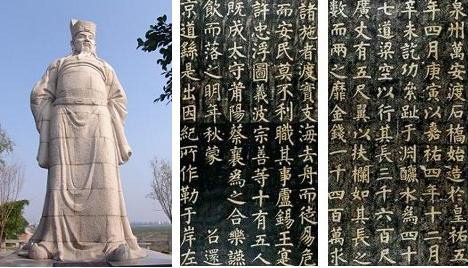
The full text of "Wan'an Bridge" has a total of 153 words, written in regular script, recording the time, age, length and width of the bridge, the amount of silver spent, the people involved, etc., which are engraved on two stone tablets, each tablet is 2.89 meters high. It is 1.46 meters wide and 0.3 meters thick. The characters on the stele are divided into 6 lines, each character is 1.8 centimeters long and 1.5 centimeters wide. There are two existing stele inscriptions. One was damaged and re-engraved in 1963, imitating the original; the other was originally inscribed in the Northern Song Dynasty. The original open-air cliff was carved on the left side of the bank. During the Xuanhe period (1119-1125), Cai Huan, the great-grandson of Cai Xiang, who served as the chief shipping officer in Quanzhou and later became the governor of Quanzhou, re-engraved the rubbings and erected them in the temple. The monument "Wan'an Bridge" adds a lot of glory to Luoyang Bridge.
The full text of "The Story of Wan'an Bridge":
Quanzhou Wan'an Crossing Stone Bridge was built in Gengyin, the fifth year of Huangyou's reign, and was completed in December of the fourth year of Jiayou's reign. It is located in Yuan, with forty-seven channels of water, and the beams are empty. It is 3,600 feet long and five feet wide, with two wings supported by railings. I have spent fourteen million dollars, asking for alms. Crossing the Shizhi Sea, leaving the boat and being alone, it is easy to be in danger but safe, and the people are not disadvantaged. There are fifteen people in charge of his duties: Lu Xi, Wang Shi, Xu Zhong, Fu Tu Yibo, Zong Shan and so on. When it was done, the prefect Puyang offered sacrifices to Xiang and gave him a banquet. Next autumn, I was called back to the capital. The road came out and was made according to the discipline, and it was tied to the left side of the bank.

